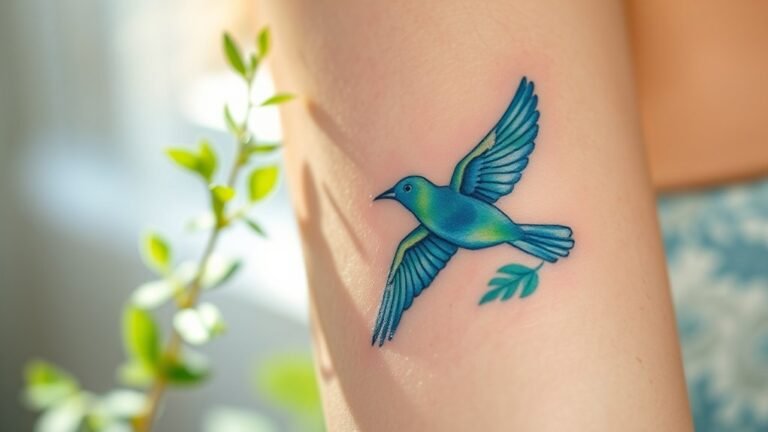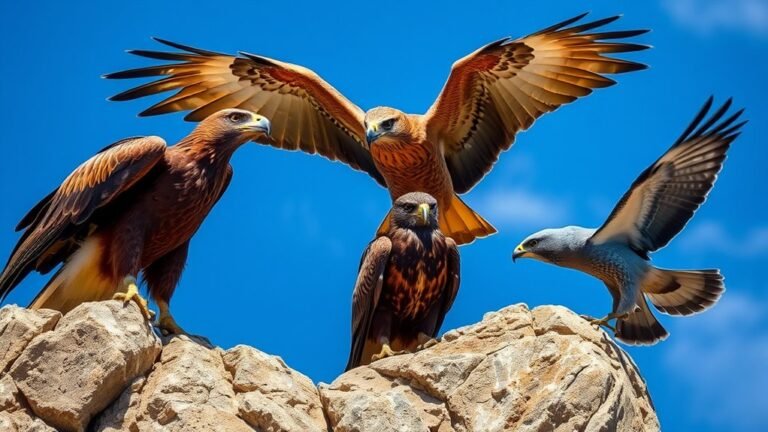Mockingbird Symbolism and Its Significance
The mockingbird is a strong symbol of innocence and goodness in books, especially in "To Kill a Mockingbird." It represents purity and reminds us to think about our views on vulnerable people. Characters like Tom Robinson and Boo Radley show us what it means to be like a mockingbird.
This symbol helps us understand important issues in society today. It makes us think about justice and how we treat others. When we consider the mockingbird's meaning, we can see its lessons about kindness and fairness in our own lives. What lessons can we learn from this symbol? How can it change how we see others?
A Quick Overview
The mockingbird represents innocence. It reminds us to protect the weak and vulnerable people in our communities.
Mockingbirds can mimic different sounds. This shows us how connected and adaptable they are in nature. They bring richness to our environment.
In "To Kill a Mockingbird," we see characters like Tom Robinson and Boo Radley face unfairness in society. They show us the struggles of being innocent in a harsh world.
Atticus Finch believes that harming a mockingbird is wrong. He teaches us to be moral and kind to those who are innocent.
When we practice empathy and understanding, we create a caring society. This helps us protect fragile and vulnerable people. Let's be like the mockingbird and care for others!
The Nature of the Mockingbird

The mockingbird is a special bird that shows the value of innocence. This bird can imitate many different sounds from its surroundings. Its ability to mimic these sounds makes the environment lively and interesting. This skill reminds us how everything in nature is connected.
Mockingbirds adapt well to their homes. They blend in with their surroundings, highlighting the need to protect innocence in nature and in our communities.
When you watch a mockingbird move through its space, it makes you think about how important it's to take care of the fragile parts of life. Caring for these aspects helps everyone feel like they belong.
The Mockingbird in "To Kill a Mockingbird"

In "To Kill a Mockingbird," the mockingbird represents innocence and doing what's right. Throughout the story, we can see this idea in characters like Tom Robinson and Boo Radley. By learning about their struggles, we start to see how unfair society can be and how people can lose their innocence.
Atticus Finch, a main character, tells us that it's a sin to kill a mockingbird. This means it's wrong to hurt those who are innocent and good. This idea makes us think about our own beliefs and how our actions affect others.
The mockingbird isn't just a symbol; it reminds us to take care of those who are innocent, especially when they face unfairness. It encourages us to show kindness and courage in our communities.
Innocence and Vulnerability

Innocence and vulnerability often go together. This connection makes a fragile balance that can break easily. In stories, mockingbirds are a common symbol for these weak and innocent creatures. Their innocence is special, but it can quickly fade away.
As life goes on, tough situations can take away this innocence. When this happens, people often feel empty. This loss doesn't just hurt one person; it affects everyone in the community. When innocence disappears, so does the trust that keeps people connected.
Seeing how everything is linked can help us feel empathy. It reminds us to care for those who are vulnerable. Protecting innocence helps us stay connected and shows our humanity.
Let's work to keep innocence safe for everyone.
The Moral Imperative to Protect
We often focus on progress and our own success, but we've a big job to do: protect those who are innocent, like the mockingbird. Taking care of the vulnerable isn't just a nice thing to do; it's our duty as part of a community.
When we protect the innocent, we show that they matter and that they've value. This responsibility isn't just a one-time act; it requires us to stay alert.
If we ignore this duty, we allow harmful things to grow and hurt others. By taking this responsibility seriously, we help create a culture where everyone feels cared for.
This makes our community better and helps everyone feel like they belong. Let's work together to build a caring society where compassion shines bright!
Empathy and Understanding
Empathy and understanding are very important for making a community that cares about protecting the innocent, like the symbolic mockingbird. You can grow your empathy when you try to relate to what others feel and experience. It's not just about feeling sorry for someone; it's about really listening and getting to know different viewpoints.
When you practice empathy, you help create a space where many ideas can mix together, making your community richer. By understanding these differences, you can break down walls, encourage conversations, and support acceptance.
This way, you help protect the metaphorical mockingbirds in your life and build a place where everyone feels respected and cared for. Your commitment to understanding others makes our shared humanity stronger.
Prejudice and Its Consequences
Prejudice hurts people and communities. It creates walls that stop us from understanding each other. This problem often comes from deep-seated racial bias and makes social injustice grow. Prejudice pushes aside marginalized groups and takes away the wonderful diversity that helps society grow and get better. This cycle can cause fear and ignorance, leading to more unfair treatment.
When you see prejudice, remember it's the first step to breaking down these walls. Think about how social injustice affects your community. It creates a gap that stops us from feeling empathy and making connections.
By welcoming everyone and looking at our own biases, we can work towards a fairer society. It's important that every voice is heard and understood.
Together, we can make everyone feel included and accepted. Let's build a place where everyone belongs!
Symbolism Beyond Literature
Symbolism is all around us, not just in books. It shows up in many parts of life and helps us understand each other better.
Here are some main areas where symbols make a big difference:
- Visual Arts: Artists use symbols to share feelings and ideas. These symbols help people think about important topics in society.
- Religious Practices: In many religions, symbols represent beliefs and traditions. They help bring communities together and strengthen shared values.
- Social Movements: Groups fighting for change use symbols to share their goals. These symbols unite people and encourage them to take action.
The Mockingbird's Legacy in Modern Society
The mockingbird has a special place in stories, but its impact goes beyond just books. In today's world, the mockingbird stands for important ideas like innocence, kindness, and fairness. Artists use the mockingbird in their work to inspire people to think about social issues that matter.
Many see the mockingbird as a symbol of hope and action. It reminds us to speak up for those who can't speak for themselves. This bird encourages each of us to make a difference in our communities.
As you face everyday challenges, remember the mockingbird's message. It tells us to be caring and to support one another.
Together, we can create a better world by standing up for what's right and ensuring everyone feels they belong.
Frequently Asked Questions
What Other Birds Symbolize Similar Themes as the Mockingbird?
When you think about birds that share similar themes with the mockingbird, two great ones to consider are cardinals and nightingales.
Cardinals are symbols of hope and love. Their bright red color stands out and can bring a smile to anyone who sees them. They remind us that love and hope are always around us.
Nightingales are known for their beautiful songs. Their music often conveys feelings of beauty and longing. They can make us feel connected to our emotions and memories.
Both cardinals and nightingales reflect deep feelings, just like mockingbirds do. They can create a sense of belonging and warmth in our hearts.
How Can I Interpret Mockingbird Symbolism in Personal Experiences?
You can understand mockingbird symbolism by thinking about your own life. Reflect on how mockingbirds show innocence and protection. These ideas might connect with your feelings and experiences.
When you think about this symbolism, you may feel a sense of belonging. It can help you understand yourself better. In quiet moments, ask yourself how mockingbirds' lessons relate to your journey. This understanding can be both meaningful and comforting.
Are Mockingbirds Considered Pests or Beneficial to Ecosystems?
Mockingbirds can sometimes seem like pests because they sing a lot. However, they play an important role in nature. They help control pests by eating insects. They also spread seeds, which helps plants grow. This makes our environment richer and more diverse.
When you think about mockingbirds, remember they are more than just noisy birds. They contribute to the balance of nature. So, while their singing might bother some people, their presence is actually good for the ecosystem.
What Is the Origin of the Phrase "Sing Like a Mockingbird"?
The phrase "sing like a mockingbird" comes from how these birds can copy many different sounds. Mockingbirds are really good at imitating other birds and even sounds from their surroundings. This ability shows off their talent and creativity.
When we say someone "sings like a mockingbird," we mean they express themselves beautifully and creatively. It reminds us to appreciate the art in our own lives and how we share our thoughts and feelings.
How Does Mockingbird Symbolism Vary Across Different Cultures?
Mockingbirds have different meanings in various cultures. These birds can symbolize change and creativity. They play an important role in stories and bring people together. Each culture adds its own beliefs and values, making mockingbirds special in many ways. Their songs and actions connect people and help share feelings and ideas. In many traditions, mockingbirds remind us of the beauty of adapting and expressing ourselves.

Luna is the passionate founder and author of Birds and You, a website dedicated to sharing her love for birds with fellow enthusiasts. Through her engaging articles and guides, she aims to educate and inspire others to explore the fascinating world of birds. When she’s not writing, you can find Luna observing birds in their natural habitats or sharing beautiful bird photography on Pinterest. Join her on this journey to celebrate and protect our feathered friends!







